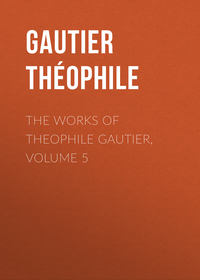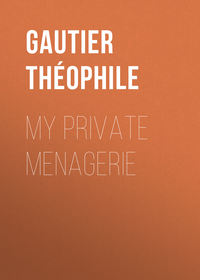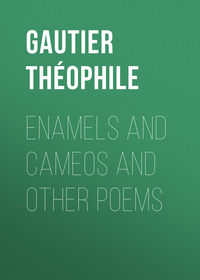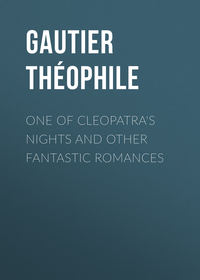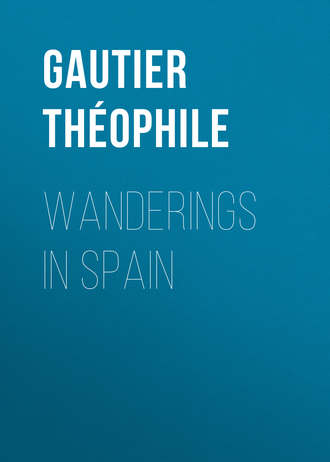 полная версия
полная версияWanderings in Spain
Valladolid is a large city that is almost entirely depopulated. It is capable of containing two hundred thousand souls, and the number of its inhabitants scarcely amounts to twenty thousand. It is a clean, quiet, elegant town, possessing many peculiar features that tell us we are approaching the east. The façade of San Pablo is covered with marvellous sculptures, of the commencement of the Renaissance period. Before the entrance, and arranged like posts, are granite pillars, surmounted by heraldic lions, holding in every possible position a shield with the arms of Castile upon it. Opposite this edifice is a palace of the time of Charles V., with a courtyard surrounded with extremely elegant arcades and most beautifully sculptured medallions. In this architectural gem, the government sells its ignoble salt and detestable tobacco. By a lucky chance, the façade of San Pablo is situated in a square, so that a daguerreotype view can be taken of it, which there is generally a great difficulty in doing in the case of edifices of the Middle Ages, almost always hemmed in by a heap of houses and abominable sheds; but the rain, which did not cease for a moment during our stay in Valladolid, prevented our profiting by this circumstance. Twenty minutes of sunshine, piercing the streams of rain at Burgos, had enabled us to take very clear and distinct views of the two spires of the Cathedral and a large portion of the portal; but, at Valladolid, we did not have even twenty minutes, a circumstance which we regretted all the more from the fact of the town abounding in charming specimens of architecture. The building which contains the library, and which they wish to turn into a museum, is built in the most pure and delicious style; and although certain ingenious restorers, who prefer bare boards to bas-reliefs, have scraped away the admirable arabesques in a shameful manner, there is still enough left to render the edifice a masterpiece of elegance. We would particularly direct the attention of draughtsmen to an internal balcony, which cuts the angle of a palace situated on this same Plaza de san Pablo, and forms a mirador of the most original description. The outline of the small column uniting the two arches, is peculiarly happy. According to the tradition, it was in this house that the terrible Philip II. was born. We may also mention the colossal fragment of an unfinished cathedral, of granite, by Herrara, in the style of St. Peter's at Rome. This edifice was abandoned for the Escurial, that lugubrious and fantastic production of Charles V.'s melancholy son.
In a church that was closed, we were shown a collection of pictures that had been made at the time the convents were suppressed, and taken to Valladolid in obedience to an order of the superior authorities. This collection proves those who pillaged the convents and churches to be excellent artists and admirable connoisseurs, for they left none but the most horrible daubs, the best of which would not fetch fifteen francs in a broker's shop. The Museum contains a few tolerable specimens, but nothing at all first-rate; to make up for this defect, there is a great quantity of wood carving, and a large number of ivory figures of our Saviour, but they are more remarkable for their size and antiquity than for the actual beauty of the execution. Persons who go to Spain for the sake of purchasing curiosities will be greatly disappointed; they will not find a single valuable weapon, a rare book or a manuscript. Such objects are never to be met with.
The Plaza de la Constitucion at Valladolid is very handsome and very large. It is surrounded by houses, which are supported by columns of bluish granite formed of a single block. These columns produce a fine effect. The Palace de la Constitucion is painted russet-green, and ornamented with an inscription in honour of the innocente Isabella, as the little queen is called here; it also possesses a clock which is illuminated at night, like that of the Hôtel de Ville at Paris, an innovation whereat the inhabitants seem greatly to rejoice. Under the pillars are established swarms of tailors, hatters, and shoemakers, whose callings are the three most flourishing ones in Spain. Here, too, are the principal coffee-houses, and the whole life of the population seems to be centered in this one spot. In the other parts of the town you will only meet at rare intervals some straggling individual or other, a criada going to fetch water, or a countryman driving an ass before him. This appearance of solitude is augmented still more by the large extent of ground occupied by the town, in which the squares are more numerous than the streets. The Campo Grande, near the principal gate, is surrounded by fifteen convents and could make room for a great many more.
On the evening of our arrival, the performance at the theatre consisted of a piece by Don Breton de los Herreros, a dramatic author who is greatly esteemed in Spain. This piece bore the strange title of El Pelo de la Desa, which signifies when literally translated, The Hair of the Pasturage, a proverbial expression which it is rather difficult to explain, but which answers to the French saying, "La caque sent toujours le hareng" (what is bred in the bone will never come out of the flesh). The plot of the piece turns upon the fact of an Aragonese peasant being about to marry a young girl of noble birth, but having the good sense to feel that he can never be fitted for polite society. The comicality consists in the perfect imitation of the Aragonese dialect and accent, a kind of merit that is not easily perceived by foreigners. The baile nacional, without resembling the "Dance of Death" quite as much as that at Vittoria, was but a poor affair. The next day they played Victor Hugo's Hernani, ou l'Honneur Castillan, translated by Don Eugenio de Ochoa. We took care not to neglect so fine an opportunity. The piece is rendered verse for verse with scrupulous exactitude, save some few passages and scenes which were necessarily omitted to suit the public taste. The Scene of the Portraits is reduced to nothing, because Spaniards consider it insulting, and imagine that they are indirectly ridiculed in it. There are also some passages omitted in the fifth act. In general, Spaniards feel affronted when they are spoken of in a poetical manner; they assert that they are calumniated by Victor Hugo, Mérimée, and most of the authors who have written on Spain; yes – calumniated by being represented nobler than they are. They most strenuously disavow the Spain of the Romancero and the Orientals; they almost invariably assert that they are neither poetical nor picturesque, and their assertion is, alas! but too well founded. The drama was well played. The Ruy Gomez of Valladolid was most certainly equal to that of the Rue de Richelieu, which is not saying a little. As for the Hernani, that rebelle empoisonné, he would have been highly satisfactory, had he not had the bad taste to dress himself up like the troubadour on a clock. The Doña Sol was almost as young as Mademoiselle Mars, without her talent.
The Theatre at Valladolid is of a very pleasing shape, and although the interior is only decorated with a coat of white paint, ornamented with cameos on a grey ground, it produces a pretty effect. The decorator has hit upon the strange fancy of painting the partitions of the stage-boxes, so as to resemble windows with spotted muslin curtains, exceedingly well imitated. These windows have a very singular appearance. The balcony and the front of the boxes are formed of open-work, which enables the spectator to see whether the women have small feet and well-made shoes; indeed, it also enables him to see whether they possess a neat ankle and well-fitting stocking. This, however, cannot be at all disagreeable to Spanish women, who are nearly always irreproachable in this respect. I perceived by a charming feuilleton written by my literary substitute (for the Presse penetrates even into these barbarous regions), that the boxes of the new Opéra Comique are constructed on the same plan.
Beyond Valladolid the character of the country changes, and the vast heaths recommence. They possess, however, the advantage over those of Bordeaux of being dotted with clusters of green dwarf oaks, and fir-trees that spread out more at the top, and somewhat resemble a parasol in shape. But they are marked by the same aridity, the same solitude, the same look of desolation. Here and there are scattered heaps of rubbish, pompously called villages, which have been burnt and devastated by the various contending factions; and wandering about among their ruins are seen some few inhabitants, looking tattered and miserable. The only picturesque objects are a few petticoats, of a very bright canary colour, enlivened with embroidery of various hues, representing birds and flowers.
Olmedo, where the coach stops for the passengers to dine, is completely in ruins. Whole streets are deserted, and others choked up by fallen houses, while grass grows in the squares. Like the doomed cities mentioned in Holy Writ, Olmedo will soon contain no inhabitants save the flat-headed viper, the blear-eyed owl, and the dragon of the desert, who will drag the scales of his belly over the stones of the altars. A girdle of old dismantled fortifications surrounds the place, and the charitable ivy throws its cloak of verdure over the nudity of the gutted and yawning towers. Nature endeavours to repair as well as she can the ravages committed by Time and War. The depopulation of Spain is frightful: in the time of the Moors she possessed thirty-two millions of inhabitants, and, at present, the numbers, at most, ten or eleven millions. Unless some very fortunate change takes place – a thing that is not excessively probable – or the marriages are blessed with supernatural fecundity, many towns that were once flourishing will be abandoned altogether, and their ruins of brick and clay insensibly become amalgamated with the soil which swallows up all things – cities as well as men.
In the room where we dined, a tall woman, built like a Cybele, kept walking up and down, carrying under her arm an oblong basket, covered with a piece of stuff. From this basket there issued little plaintive cries, rather like those of a very young child. I was somewhat puzzled at this, because the basket was so small that if it had contained a child the latter must have been of the most microscopic and phenomenal proportions – a Lilliputian that ought to be exhibited at fairs. It was not long before the enigma was explained. The nurse – for such she was – drew out from the basket a coffee-coloured puppy, and sitting down, very gravely suckled this new description of baby. She was a pasiega going to Madrid to take a situation, and was afraid that her supply of milk might dry up.
On leaving Olmedo, the country does not offer any great variety of scenery; the only thing worth notice that I remarked, before we reached our quarters for the night, was an admirable effect of sunset. The rays of light illuminated one side of a chain of very distant mountains, all the details of which stood out with the greatest clearness, but the portions that were plunged in shadow were almost invisible; and the sky bore a most saturnine appearance. Were a painter to transfer this effect exactly to canvas, he would be accused of exaggeration and inexactitude. On this occasion the posada was much more Spanish than any we had hitherto seen. It consisted of an immense stable surrounded by chambers with whitewashed walls, containing four or five beds each. The whole place was miserable and naked, but not dirty; the characteristic and proverbial filth did not yet make its appearance. In fact, the dining-room contained an incredible example of sumptuousness in the way of furniture, – namely, a set of engravings representing the Adventures of Telemachus, not the charming vignettes with which Célestin Nanteuil and his friend Baron, have illustrated the history of the wearisome son of Ulysses, but those horrible coloured daubs with which the Rue Saint Jacques inundates the whole world. We set off again at two in the morning, and, as soon as the first streaks of day enabled me to distinguish the different objects, I beheld a sight that I shall never forget as long as I live. We had just changed horses at a village called, I think, Santa Maria de las Nieves, and were toiling up the first ridges of the chain of mountains we had to traverse. I almost imagined I was passing through some city built by the Cyclops. Immense blocks of sandstone, that assumed all sorts of architectural shapes, rose up on all sides, their outlines standing out upon the background of the sky like so many fantastic Towers of Babel. In one place, a flat stone that had fallen across two other rocks bore a most astonishing resemblance to the peulven or dolmen of the Druids; further on, a series of lofty fragments, shaped like the shafts of columns, represented porticoes and propylæa; in another place, you saw nothing but a chaos – an ocean of sandstone suddenly frozen when in a state of the utmost fury. The bluish-grey of these rocks augmented still more the singularity of the view, while, at every moment, from out the interstices of the stone there gushed forth, in the shape of drizzling vapour, or trickled down like tears of crystal, numerous mountain springs. But what particularly enchanted me was the snow which had melted and run into the hollows, forming little lakes, bordered with emerald-coloured grass, or framed in a circle of silver, composed of snow which had resisted the action of the sun. Pillars raised at certain distances, and serving to direct the traveller when the snow throws its perfidious mantle over the right road and the precipices, gave the scene a sort of monumental appearance. The torrents foam and roar in every direction; the road passes over them by means of the bridges of uncemented stone so frequent in Spain, and which you meet at every step you take.
The mountains continued to tower higher and higher, and when we had ascended one, another, which we had not before seen, rose up before us. The mules were no longer equal to their task, and we were under the necessity of procuring a team of oxen, which gave us an opportunity of alighting, and performing the rest of the ascent on foot. I was actually intoxicated with the pure bracing air; I felt so light, so joyous, so full of enthusiasm, that I cried out and capered about like a young goat. I experienced a desire to throw myself down all the charming precipices, that looked so azure, so vapoury, and so velvet-like. I wished to be carried away by the cascades, to dip my feet in all the springs, to pluck a leaf from every fir, to roll myself in the glittering snow, to be mixed up with all the objects around, and melt like an atom in the immensity before me.
The lofty mountain crests glistened and sparkled in the sun, like the skirt of a dancing-girl's robe under its shower of silver spangles; others, again, had their peaks surrounded by clouds, and merged imperceptibly into the sky, for nothing resembles a mountain so much as a cloud. The whole view was composed of one succession of precipices and undulations. It is beyond the power of art, whether of the pen or the pencil, to convey an adequate idea of their different colours and forms. Mountains realize all that the imagination can picture of them, and this is no small praise. The only difference between the reality and the idea we form of it, arises from the fact of our fancying mountains look larger than they do. We are only aware of their enormous size by comparison. On gazing attentively, you perceive that what, at a distance, you took for a blade of grass, is a fir-tree sixty feet high.
At the turn of a bridge, admirably adapted for an ambuscade of brigands, we beheld a small column surmounted by a cross. It was erected to the memory of a poor devil who had ended his days in this narrow pass, in consequence of his having fallen a victim to manoairada (violent death). From time to time we met travelling maragatos, in their costume of the sixteenth century, which consists of a tight-fitting leathern doublet, fastened with a buckle, wide breeches, and a broad-brimmed hat. We also met several Valencianos, with their white linen drawers, like the robes of the Klephts, their handkerchief twisted about their head, their white gaiters bordered with blue, and without feet, after the fashion of the antique Knemis, and their long piece of cloth (capa de muestra), crossed diagonally by bright-coloured stripes, and draped over their shoulders in a very elegant manner. All that we could perceive of their flesh was as tawny as Florentine bronze. Then, again, we saw strings of mules, caparisoned in the most charming fashion, with bells and party-coloured fringe and housings, while their arrieros were armed with carbines. We were enchanted, for we had found an abundant supply of the picturesque of which we were in search.
The higher we ascended, the thicker and broader became the strips of snow; but a single sunbeam made the mountains stream with water, like a woman laughing in the midst of her tears; on every side little brooks, scattered about like the dishevelled tresses of some Naïad, and clearer than crystal, forced their way downwards. By dint of climbing, we reached the summit of the range, and seated ourselves on the plinth of a large granite lion, which is situated on the further side of the mountain, and marks the boundary of Old Castile; beyond this lion the province of New Castile commences.
We took a fancy to cull a delicious red flower, whose botanical name I do not know, and which was growing in the fissures of the mountain. This necessitated our clambering up on a rock, which is said to be the place where Philip II. used to sit to see how the works of the Escurial were advancing. Either the tradition is apocryphal, or Philip II. must have possessed most astoundingly good eyes.
The coach, which had been toiling up the precipitous steeps, at last rejoined us once more. The oxen were unyoked, and we descended the declivity in a gallop. We stopped to dine at Guadarrama, a little village crouched at the foot of the mountain. The only ornament of which it can boast is a granite fountain, erected by Philip II. At this place, by a strange reversion of the natural order of dinners, goats' milk soup was served up as dessert.
Madrid, like Rome, is surrounded by a desert; it is impossible to convey an idea of its aridity and desolation. There is not a tree, a drop of water, a green plant, or the least appearance of humidity; nothing but yellow sand and iron-grey rocks; and when you leave the mountain, you do not find even rocks, but large stones. From time to time you perceive a dusty venta, a cork-coloured spire, just showing its nose on the horizon, large melancholy-looking oxen dragging along one of the cars we have already described; a countryman on horseback, or on a mule, with a fierce expression of face, a carbine at his saddle-bow, and a sombrero slouched over his eyes, or long strings of whity-brown asses, carrying chopped straw, which is corded up with a network of small ropes, and that is all. The ass which walks first, the coronel, has always a small feather or rosette, indicating his superiority in the hierarchy of the long-eared tribe.
At the expiration of a few hours, which our impatience to reach our destination caused to appear still longer than they really were, we at last perceived Madrid with tolerable distinctness. A few minutes afterwards we entered the Spanish capital by the Puerta de Hierro, and drove along an avenue planted with dwarf pollards and bordered by small brick towers which serve to raise water. Talking of water, although the transition is not very well timed, I forgot to mention that we crossed the Manzanares by means of a bridge that was worthy of a river of a more serious description; we then passed by the Queen's Palace, one of those edifices which people are pleased to designate as tasty. The immense terraces on which it is raised give it rather a grand appearance.
After having undergone the visit of the custom-house officials, we proceeded to take up our quarters in the immediate vicinity of the Calle d'Alcala and of the Prado; the name of our street was the Calle del Caballero de Gracia, and our hotel was called La Fonda de la Amistad, where Madame Espartero, Duchess de la Vittoria, happened at that time to be staying. The first thing we did was to despatch Manuel, our temporary servant, a most ardent aficionado and tauromachist, to procure us tickets for the next bull-fight.
CHAPTER VI
MADRID
Bull-fights – The Arena – Calesins – Espadas, Chulos, Banderilleros, and Picadores Sevilla the Picador – La Estocada a Vuela PiesWe were obliged to wait two days. Never did two days appear so long to me, and in order to overcome my impatience, I read over more than ten times the bills posted up at the corners of the principal streets. These bills promised wonders; they announced eight bulls from the most famous pasturages; the picadores, Sevilla and Antonio Rodriguez; and the espadas, Juan Pastor, also called El Barbero, and Guillen; they wound up by prohibiting the public from throwing into the arena orange-peel or any other projectile capable of injuring the combatants.
The word matador is scarcely ever employed in Spain to designate the person who kills the bull; he is entitled espada (sword), which is more noble and more characteristic. Neither is the word toreador used, but torero. I just mention this as a piece of useful information for those authors who are accustomed to introduce a little local colouring into their ballads and comic operas. The fight is called media corrida, half-course or fight, because formerly there used to be two every Monday, one in the morning and one at five in the afternoon, the two together making up the day's amusement. At present only the fight in the afternoon is preserved.
It has been asserted and reasserted on all sides, that the Spaniards are losing their taste for bull-fights, and that civilization will soon cause the amusement to be discontinued altogether. If civilization does effect this, all I can say is that it will be all the worse for civilization, as a bull-fight is one of the grandest sights that the imagination of man can conceive; but, at any rate, the time for their abolition has not yet arrived, and those sensitive writers who affirm the contrary have only to transport themselves some Monday, between the hours of four and five, to the Puerta d'Alcala, in order to be convinced that the taste for this ferocious pastime is, as yet, very far from extinct.
Monday, which is the bull-day, dia de toros, is a holiday. No one does any work, and the whole town is in commotion. Those persons who have not previously bought their tickets, hasten off towards the Calle de Carretas, where the ticket-office is situated, in the hope of finding some place still vacant, for the enormous amphitheatre is all numbered and portioned into stalls, a plan which cannot be praised too highly, and which might be imitated with advantage in the French theatres. The Calle d'Alcala, the artery into which all the populous streets of the city flow, is filled with foot-passengers, horse-men, and vehicles. To grace this solemnity, the most strange and extravagant calesins and cars emerge from their dusty retreats, while the most fantastic horses, and the most phenomenal mules come forth into the light of day. The calesins reminded me of the Neapolitan corricoli. They have large red wheels and no springs, the body being decorated with paintings more or less allegorical, and lined with old damask silk or faded serge with long silk fringe. Altogether, they produce a most absurd rococo effect. The driver sits upon the shaft; this enables him to harangue and belabour his mule just as he thinks fit, and also makes one place more for his customers. The mule is tricked out with as many feathers, rosettes, tufts, bells, and as much fringe as it is possible to fasten to the harness of any quadruped in existence. A calesin generally contains a manola, and a female friend as well as her manolo, not to mention a bunch of muchachos hanging on behind. All this flies along with the speed of lightning in the midst of a whirlwind of cries and dust. There are also carriages with four or five mules. Nothing equal to them can be found now-a-days, anywhere save in the pictures of Van der Meulen, which represent the conquests and hunting exploits of Louis XIV.


